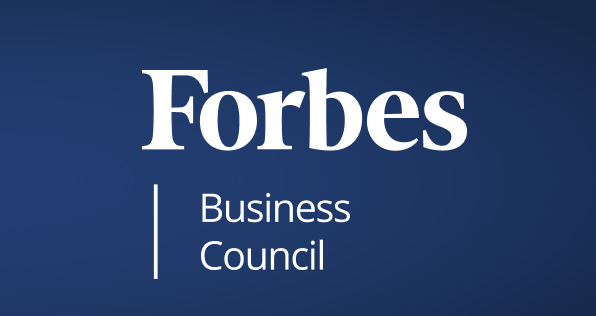— Read our article on Forbes —
Most of us have implemented key performance indicators (KPIs) to measure our progress. Agency KPIs are essential for any organization to measure progress against predetermined objectives and priorities. KPIs let advertisers focus on what matters most, align resources toward achieving those goals, identify areas that need improvement and take corrective action.
Additionally, KPIs help advertisers set expectations with agency partners, ensuring mutual accountability and building trust. Having effective KPIs can provide a clear picture of the agency’s performance, leading to better decision-making and improved outcomes.
The ANA’s “Trends in Agency Compensation” report provides a vantage point on common practices to remunerate agencies. (Disclosure: I produce content for the ANA and am part of the faculty of marketing.) They note that as of 2022, 41% of advertisers use KPIs as a basis for a performance bonus. These objectives are often captured in metrics such as agency performance reviews, sales growth, market share gains, brand awareness, brand perception, profit goals and more.
While the concept of KPIs is rooted in the idea that we can only improve what we measure, I propose we reevaluate this three-letter acronym, focusing on how we foster agency partnerships and keep them flourishing. What if KPI stood for more?
KPI No. 1: Keep Partners Informed
Keeping agencies well-informed is essential. If agencies miss the mark due to insufficient information, it can cause significant wasted effort and budget for clients. In thousands of agency performance evaluations over the last decade, my company has identified a consistent complaint about the lack of useful, actionable guidance from clients.
Agencies often fill in the blanks, making assumptions, which results in rework. It’s time-consuming and frustrating for all. While clients understand the benefits of providing guidance, it’s often given a low priority by busy marketing stakeholders. I often see that issue during the annual scope of work process and client input briefings.
Remember, an effective agency brief lays the foundation for a successful partnership and campaign. Clearly articulate the goals and objectives of the project. What do you want to achieve? Providing clear objectives helps the agency understand what success looks like and enables them to develop strategies and tactics accordingly. Share relevant information about your brand, target audience, market landscape and any previous campaigns or initiatives.
Ensure that the brief communicates your requirements clearly and concisely. Avoid ambiguity or overly broad statements that can lead to misinterpretation. And create an environment that encourages the agency to ask questions and seek clarification.
Additionally, provide a realistic project timeline and discuss budget considerations upfront. Clear expectations around deadlines and financial constraints help the agency plan their resources effectively and deliver within the given parameters.
Finally, review and iterate. Treat the briefing process as a collaborative and iterative one. Allow for feedback and revisions to the brief, incorporating inputs from both sides. This approach ensures that the brief evolves and improves over time.
KPI No. 2: Keep Partners Involved
Keeping agency partners involved requires effort, communication and a willingness to create a true partnership. This means setting clear goals and objectives that align with the partners’ interests and priorities, as well as engaging them in discussions about the company’s progress and plans.
Regular meetings and quarterly business reviews offer a venue for brainstorming ideas, challenging the status quo, building trust and strengthening relationships. Being proactive about identifying new opportunities for collaboration and growth can keep the partnership dynamic and exciting.
One company doing this is Anheuser-Busch InBev, which Cannes Lions selected as Creative Marketer of the Year for the last two years. They note the company’s sustained creative excellence has driven sustainable business growth, likely since the company keeps its agencies engaged.
KPI No. 3: Keep Partners Inspired
Brands play a key role in getting agencies excited about their work. Brands inspire agency partners by creating a culture of innovation and collaboration that encourages creativity and new ideas.
Fostering an environment where agencies feel empowered to share thoughts and suggestions without fear is key. Encouraging open dialogue and active listening can generate new perspectives and approaches to driving innovation and growth. Recognizing and rewarding partners for their contributions can also inspire continued engagement and commitment. With a culture of innovation and collaboration, businesses keep their partners inspired and motivated to grow and succeed together.
For example, General Motors recently nominated IPG’s Jack Morton Worldwide, Commonwealth//McCann and McCann Detroit as Suppliers of the Year for their work driving sustainable innovation and advanced solutions.
KPI No. 4: Keep Partners Interconnected
Keeping business partners interconnected requires clear communication channels and protocols to ensure all agency partners are informed and can collaborate. Implement joint brainstorming and problem-solving sessions to foster collaboration and creativity. Joint metrics for measuring success can help ensure that all partners are aligned on goals and objectives.
By creating a culture of collaboration that prioritizes communication, respect and shared purpose, advertisers can foster strong, productive relationships with their agencies to drive mutual success.
Agencies play a role in facilitating interconnection among their own networks, putting the client at the center of integrated teams under a single hub. This is what Publicis Groupe calls “the power of one.” This concept also recently prompted Stagwell to combine four agencies within its network under the CP+B banner, creating an integrated powerhouse agency.
KPI No. 5: Keep Partners Improving
Research reveals an urgent need to transform client-agency relationships. More than half of clients surveyed indicate that their agencies “over promise and under deliver,” and half believe there is a disconnect between what is needed and what agencies provide.
Keeping agencies improving involves continuously working to enhance the value and quality of the partnership. This requires a commitment to ongoing learning and development and a willingness to receive and provide feedback. Regularly soliciting feedback (commonly twice annually) and actively seeking opportunities for improvement can identify areas for partnership strengthening. Collaborating on joint projects and initiatives also can help partners learn from each other and improve, as well as foster stronger, more productive relationships.
Do you have the right agency KPIs in place? Next time you hear the acronym KPIs, think about the many ways you can derive greater value from your partnership with your agency—beyond the numbers.
By Bruno Gralpois, Author/Speaker, Thought-provocateur, Client/Agency Guru, Entrepreneur, Innovator
June 12, 2023






